This post may contain affiliate links. See my disclosure statement.
List of healing herbs you can grow at home that thrive in the ground or in a container herb garden. Plus easy ways to use these medicinal herbs in your everyday life.

Growing healing herbs is not only easy, but extremely satisfying and rewarding. Small herb gardens are not off-limits to anyone…all you need is a pot of fresh soil. Many herbs can be grown indoors, and all year round. In addition to their culinary and traditional uses, many herbs have healing qualities as well. Herbal medicines have been around literally since the beginning of time. Herbs are know for curing infections, lowering fevers, increasing circulation, lowering high blood pressure, and the list goes on. The following seven herbs are my favorites, and each one has its own special characteristics.
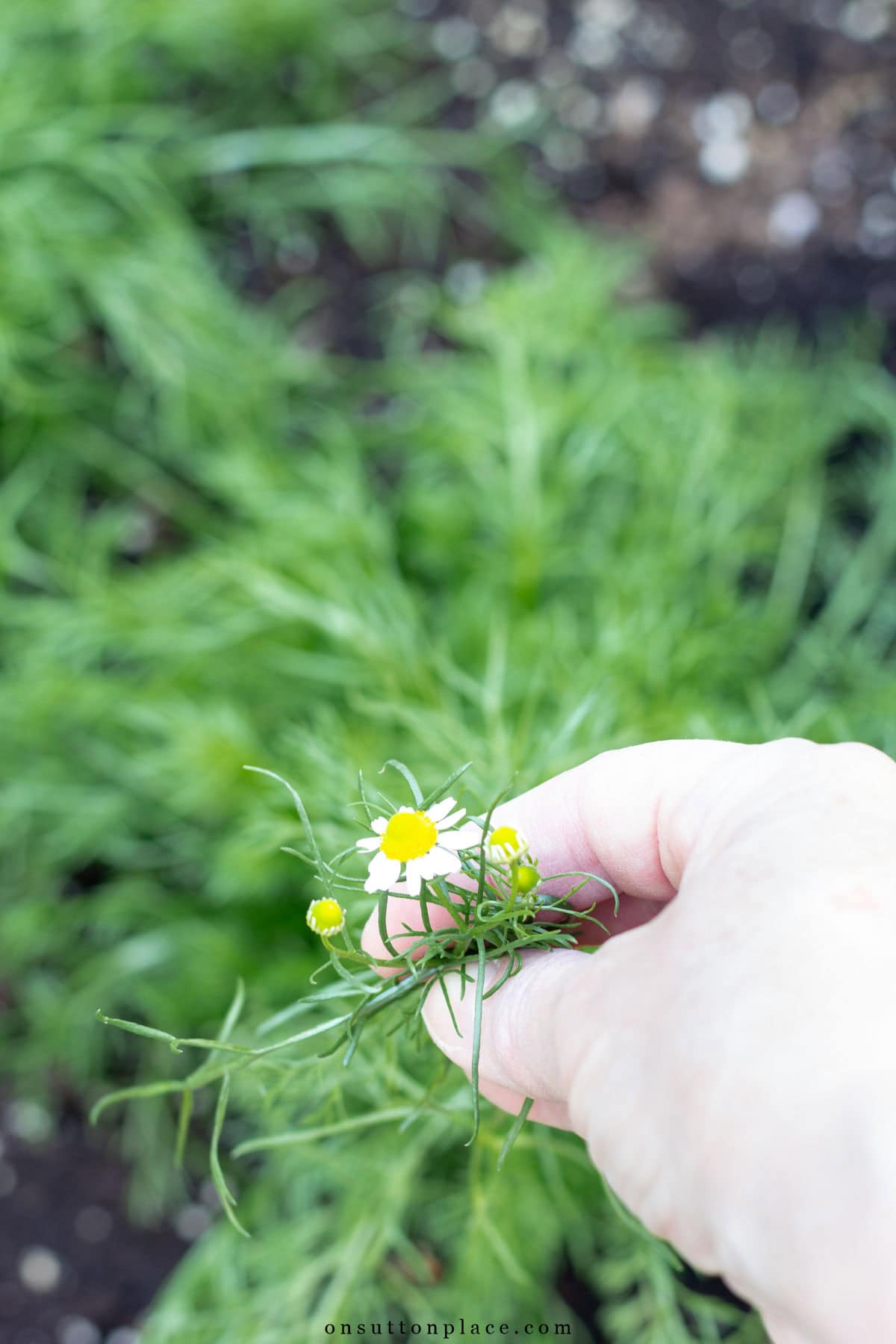
Chamomile
To grow chamomile, it’s best to plant seeds by broadcasting, and then lightly rake them into the soil. Wait until well past the last frost, and the earth is warm. Once established, this daisy-like herb is very hardy and will grow, in good conditions, up to 30 inches tall. Chamomile can really take over your garden, so be careful where you plant it. I’ve grown chamomile in a large vintage wash tub, and it grew like crazy. Just make sure to give it enough room. Harvest the blooms when they are new and hang them in a cool, dark spot to dry. The blooms can also be snipped from the stem and dried on their own. By combining dried chamomile blossoms with coconut oil, witch hazel, and aloe vera gel, a wound healing salve can be made. It also helps with skin irritation. Chamomile helps you relax, eases anxiety, and can also soothe nausea. The best way to use it as a remedy and for health benefits is to make a tea. Learn how to make tea from dried chamomile.
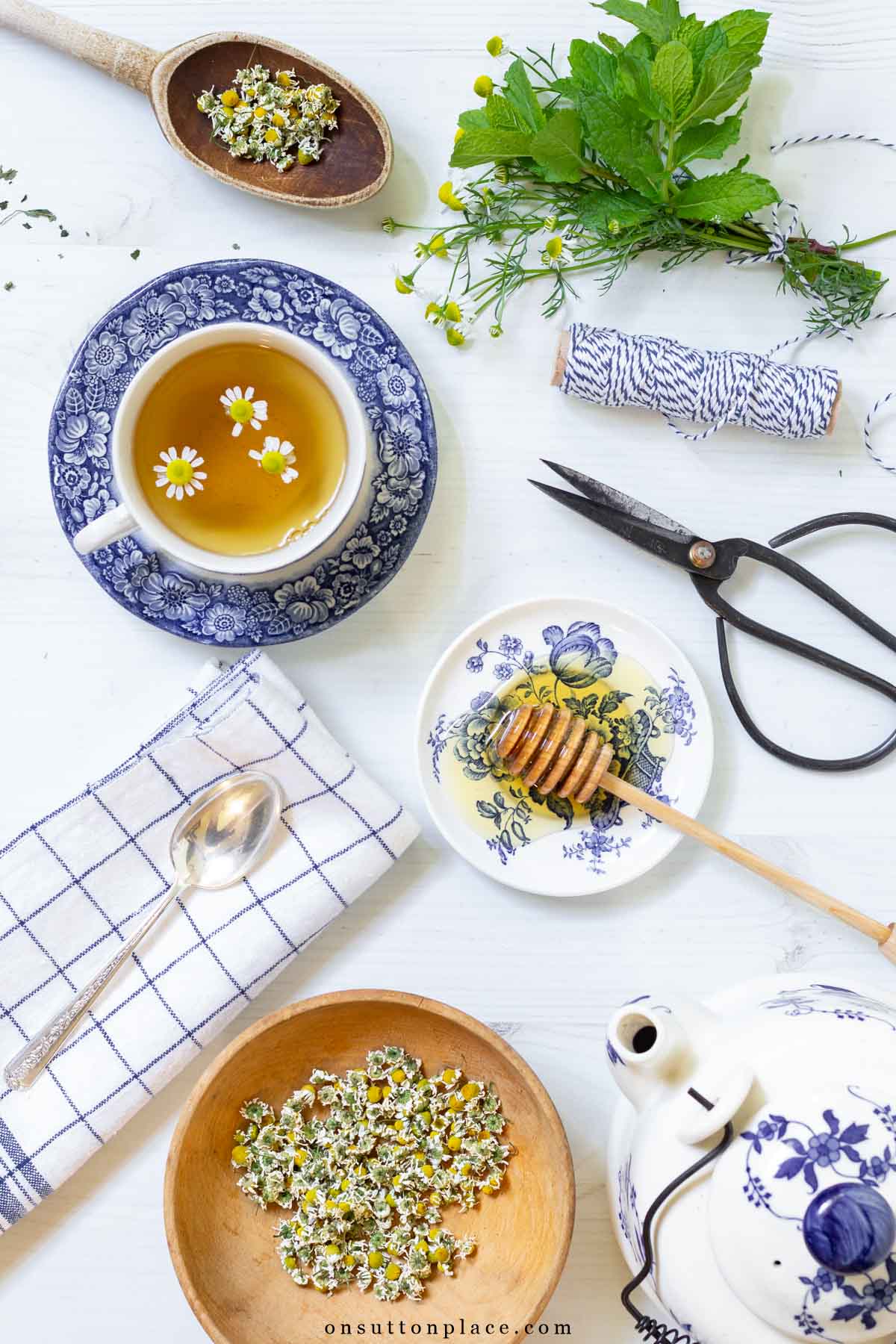
Feverfew
No list of healing herbs would be complete without feverfew, a flowering perennial that closely resembles chamomile. It can be grown in the garden, or in a container. Seeds can be started indoors and transplanted outside, or you can sow the seeds directly into the garden soil after it has warmed. Sprinkle the seeds on top of loose soil and gently press them down…but do not cover them with the soil. Lightly mist with water so you don’t flood the seeds away. You should see sprouts of green after about 14 days. Feverfew’s main healing property is headache prevention, specifically migraines and tension headaches. The leaves can be harvested, and eaten like salad greens. Just two to three small leaves per day are recommended to help keep migraines away. It is recommended to NOT use feverfew to make tea, as it’s bitter and harsh.

Rosemary
Rosemary is, without a doubt, one of my favorite healing herbs. It has so many wonderful qualities. It smells amazing, and is super easy to grow. Small bedding plants can be purchased, or it can be propagated from an existing plant. Just snip a 6 – 8 inch branch and strip the needles from the bottom 2 inches. Plant the shoot directly in fresh potting soil.

Ways To Use Rosemary
- Since rosemary helps curb inflammation, it’s beneficial to use it as a dietary supplement by adding it to meats and vegetables. It can also boost liver function and regulate blood sugar levels.
- Due to its anti-inflammatory properties, several fresh sprigs of rosemary added to a hot bath will soothe tired muscles. (I have personally done this, and it’s amazing.)
- Rosemary tea can be used as a pain reliever and digestive stimulant. Cooled, it can be used as a germ-fighting mouthwash. If you have the flu or bronchitis, rosemary tea is very soothing. To make Rosemary tea: Strip the leaves/needles from 2 or 3 rosemary stems. Steep 1 tablespoon fresh rosemary leaves in 2 cups boiling water for 5 or 6 minutes. Strain the leaves before drinking. Add honey or lemon for extra flavor.
- Delicious Recipes

Mint
There are so many different kinds of mint, but they all have one thing in common. They are very fast-growing. Mint can be planted in the spring from seedlings, or bedding plants are readily available at garden centers. Spread it out in a garden bed that won’t mind the invasion, or plant it in pots on a sunny deck or porch. Pinching the tips back regularly will keep the plants from getting out of control. Sometimes mint has a mind of its own, so if it starts to take over, just cut it back.

Mint, along with ginger, is a popular herb to calm an upset stomach, and help with digestion. Tea can be made by steeping several leaves in hot water. Or, add several leaves to a jar of fresh water, and set it in the sun for a few hours. Mint tea is not only a digestive aid, it also soothes a sore throat and cough. Poured over ice, it can be enjoyed as a cold, refreshing drink at the end of a busy day. (Add a little fresh lemon juice as a finishing touch.) Mint is a natural stimulant, so inhaling fresh, crushed mint leaves can ease tiredness and increase alertness.
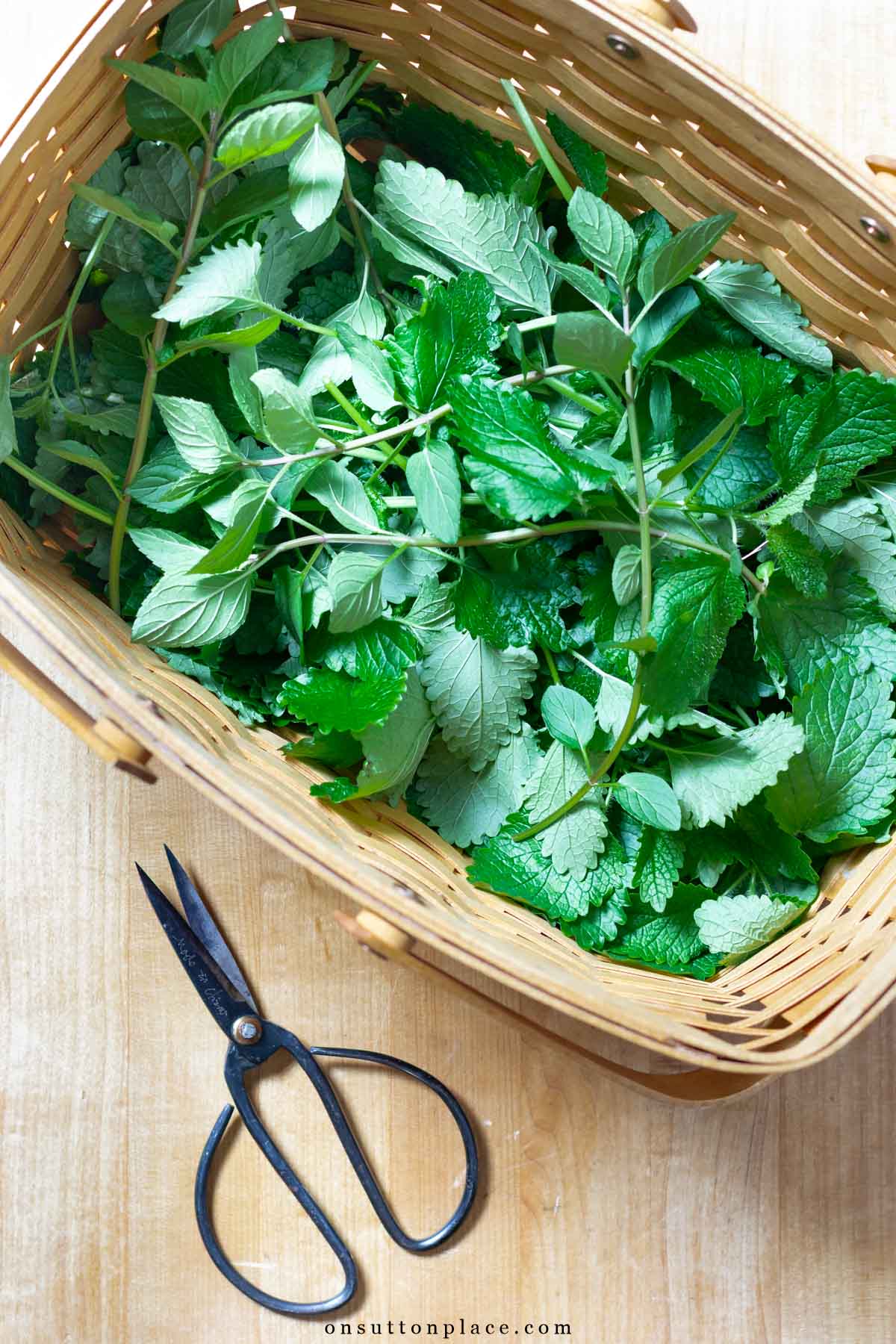
Lemon Balm
Lemon balm looks very much like mint, and is actually part of the mint family. Its bigger leaves are perfect for steeping in hot water for tea. Used fresh, lemon balm adds a lovely flavor to chicken and fish recipes. Add it at the end of the cooking time because it loses much of its flavor when exposed to heat.
- The health benefits of lemon balm are opposite those of mint. Where mint is a stimulant, lemon balm is used to relax and aid in falling asleep. A cup of lemon balm tea at bedtime will almost guarantee a good night’s sleep.
- Like other healing herbs, the lemon balm leaves can be crushed and inhaled as relaxing aromatherapy.
- Add fresh lemon balm to a jug of water, refrigerate, and enjoy.
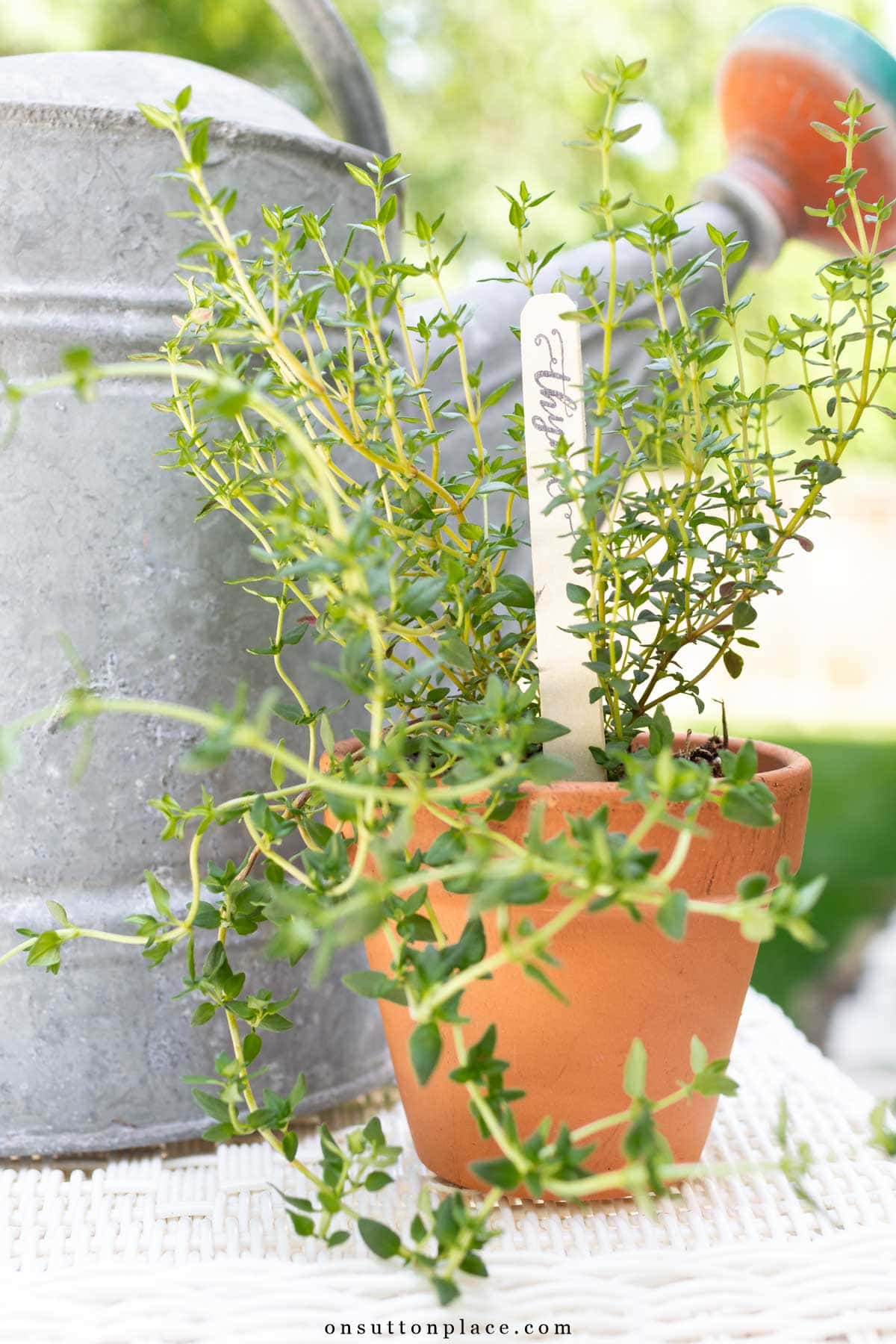
Thyme
I grew thyme for the first time last summer, and it was beautiful. It lasted in my planter until December! I love to use thyme in soups and stews, so when I don’t have it right out my back door, I buy it at the grocery store. Thyme has anti-inflammatory properties, and is used for healing abrasions and scrapes.

Lavender
I’ve saved lavender until last because it is, without a doubt, my favorite herb. The scent is like no other, and when used in cooking or baking, it adds a fresh, delicate flavor. I use dried lavender buds as an ingredient when making homemade lavender sugar scrub and in lavender sachets. When it comes to healing herbs, lavender’s qualities are many.

Ways To Use Lavender
- My favorite way to use lavender is to add lavender essential oil to unscented lotion. Applied at bedtime, the relaxing scent can help you fall asleep. It can also help to lift depression. Use as much or as little lavender oil as desired to make the lotion aromatic.
- Add lavender essential oil to bath water to help relieve stress at the end of the day.
- A calming tea can be made by steeping dried lavender buds in hot water. Strain and add a spoonful of honey for the most delicious bedtime drink.
- The taste of lavender in cookies and breads is delightful. Just combine it with sugar and crush in a food processor before using in recipes. Make my lavender lemon bread.
- Make lavender simple syrup, and then lavender lemonade.

Grow Your Own Healing Herbs
If you are interested in healing herbs and herbal remedies, but have never planted an herb garden, there is no better time than right now to give it a try. If you want to start with just one herb, I would recommend either rosemary or mint. Both can be grown in a pot, either inside or out. Once you get started, I can pretty much guarantee that you will become an official herb gardener!


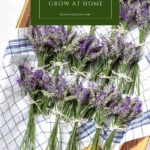
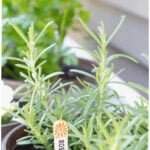
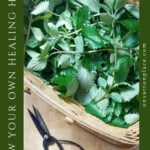
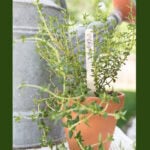
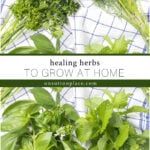

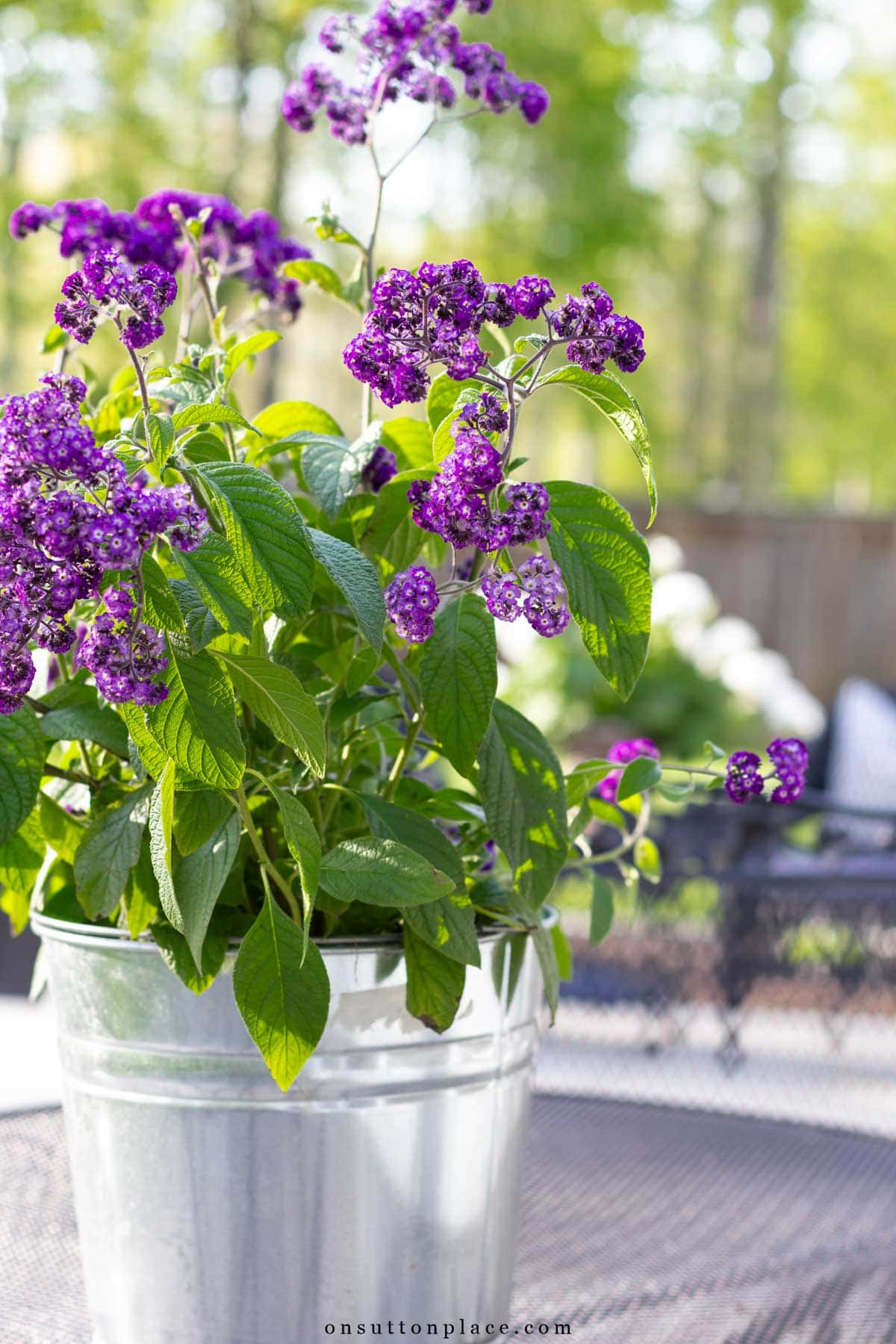



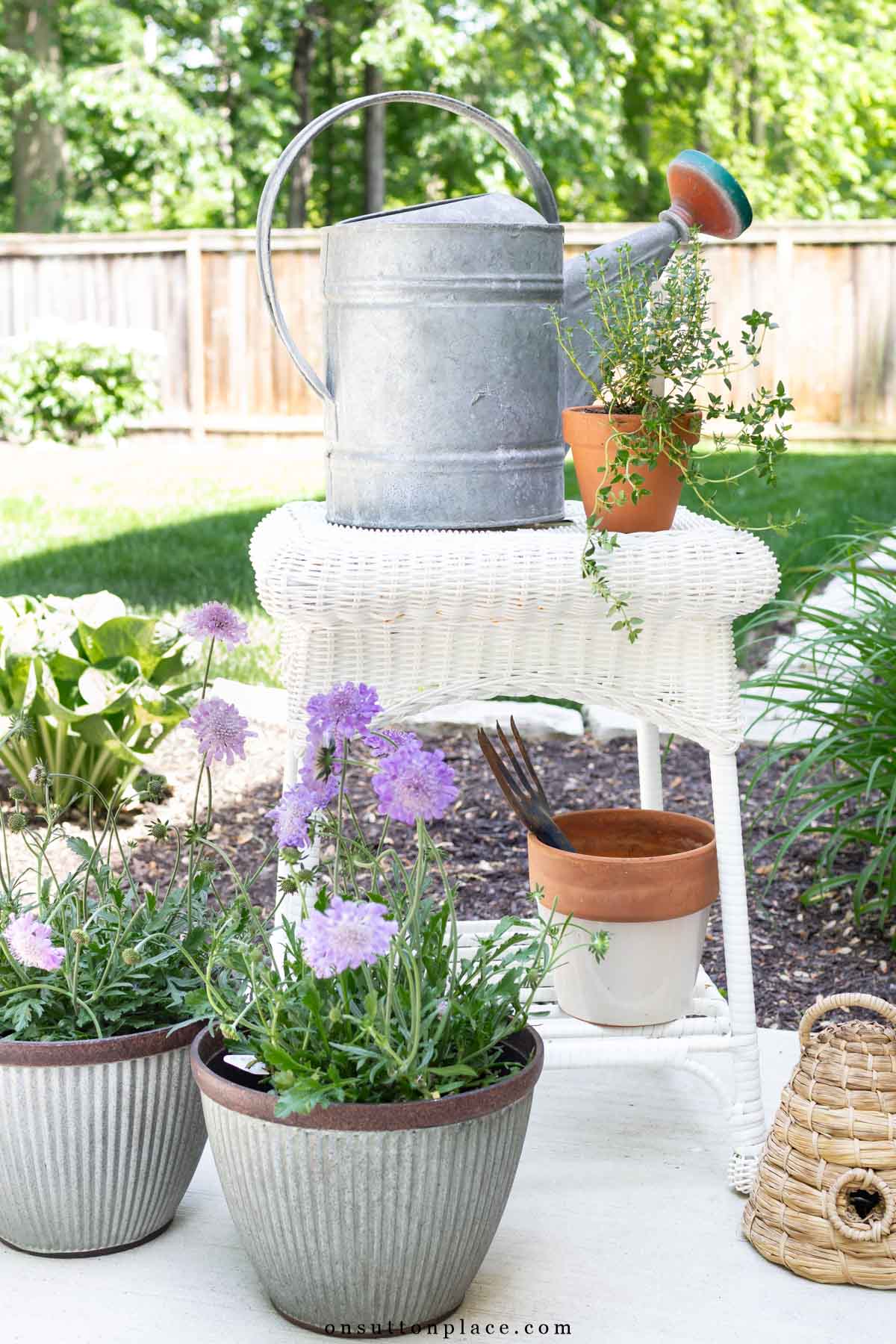

I always look forward to your blogs, they are filled with such inspirational ideas!
I love this post, thank you! May I add that our medical doctor promotes mint tea to help with head and chest congestion, stating it works like vapor rub but from the inside. I have never heard of feverfew but may have to try it. This article makes me want to grow even more herbs!
Thank you for this wonderful article. I would have to say that rosemary and lavender are two of my favorites. My sage has come back from last year. I love cooking with sage. Ready to get to the nursery for some new plants.
I live near a beautiful lavender farm…Lookout Lavender Farm in Rising Fawn, GA. You can harvest your own lavender.
A word of warning…I gré lemon balm once and it spread everywhere. It’s extremely invasive. It even showed up in my front yard but was planted in the backyard! So use a pot only and do not let it go to seed. Same with any mint.
I can’t wait to get my herb garden going this year. I may just have to try chamomile and Feverfew, both of which I’ve never grown
I have lavender and rosemary galore. I’ll try them as a tea. Thanks for information
Help! When I try to read some of the links ( the tea recipes, etc) it asks me to log in…I tried every name and password with no luck. I honestly don’t remember setting anything up but some days I don’t remember what day it is.Oh the price of living a long life.😊 How do I set it up so I can access all your links? I know the password for printables but this is different. Thanks
Peace.
Cindi
Hi Cindy…there shouldn’t be any type of login when you click on a link. This may be a browser issue. Perhaps you have a security setting that prompts a login? It’s helpful to clear your browser cache, and restart your device. That may reset everything. Please let me know if you need anything else!
Thanks for the suggestions but it didn’t work. I can click on links in other stories of yours but no luck with the links in this. I get a box that says “log in to onsuttonplace.com.bigscoots-staging.com. It wants a user name and password. Really strange. I don’t know what to do as I really wanted to read the extra info you had especially the homemade herbal tea recipes. Is there any other way to access them? I do enjoy all your stories and love the recipes and pictures. Peace.
Hi Cindi! Thank you so much for your patience and for the extra information. I found the issue and all the links are fixed. Please let me know if you have any further issues. I appreciate your help!
I was able to get in…thanks. It is kind of nice to know it wasn’t me that couldn’t make the links work but rather the link. Will be making some tea tomorrow!
what variety of lavender do you grow? I live in Michigan and have not had luck growing lavender.
This post is so helpful and informative. Thank you so much! It’s gotten me excited to plant my own herb garden. I already have 2 lavender plants in my garden so I can’t wait to expand. Thank you again! Btw, your “before” bathroom picture amazed me because that tile is spotless!!!
I learned some new things about some herbs I knew little about! Thank you!
This is such an informative post! I love Rosemary but have learned that a little goes a long way! I also learned that mint can be invasive! Plant it in pots or there will be mint coming up everywhere! Thanks , Ann for such good information.
Thank you for this informative article about growing herbs. You have inspired me! I look forward to your emails. Your photos are always so beautiful!
Stay well.
Thank you for all your beautiful pictures and useful info!! I always look forward to receiving your emails! Also thanks for sharing the fun printable!